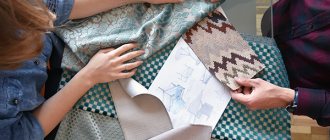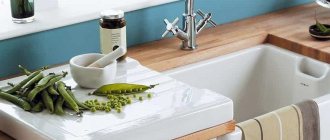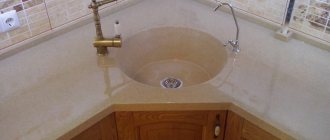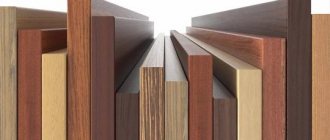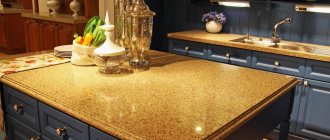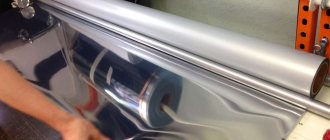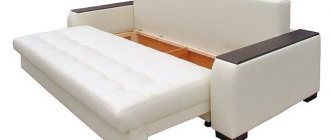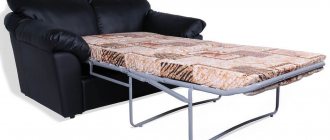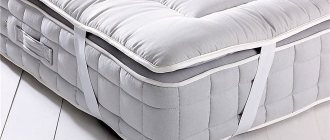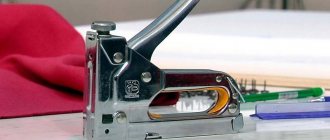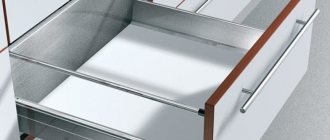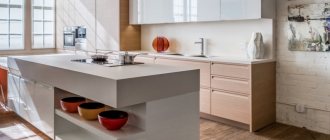Rational furniture and compliance with the laws of ergonomics are what buyers pay attention to first of all today. After all, poorly selected furniture material can spoil even the interior, the aesthetics of which are thought out to the smallest detail, and create inconvenience in the process of using the furniture. Read about which kitchen façade material is best to choose, their pros/cons, and how to skilfully save money without compromising the quality level!
The kitchen set is the “face” of the kitchen space. First of all, it sets the style here; compared to other interior elements, it influences how the kitchen will be perceived the most.
What is the choice based on?
A kitchen is a room that cannot provide furniture in good conditions, simply because food is prepared here. Consequently, the humidity here will always be at an elevated level, as will the air temperature, as well as its sudden changes, the presence of soot in the air, flying drops of fat, and the risk that aggressive liquids will reach the surface. In order for a kitchen set to last for a really long time, you need to choose a material that can successfully withstand all this.
Photo from source: hoog.design
Table top Cedar 706/S Royal opal
MDF
MDF is easy to process, so using it, it is possible to make furniture with decorative carvings and bent elements. In addition, the raw materials are compressed more densely than in the case of laminated chipboard, so MDF is more durable. Kitchen facades made of MDF are covered with: plastic, enamel, veneer, film, and also acrylic.
Of course, MDF provides enormous opportunities for decorating a kitchen in any style and creating any design.
Photo from source: panfasad.com
Materials
Today there is a wide selection of materials of different textures and colors. This allows you to create any style in the interior using kitchen facades.
To choose an original print or a front of unusual sizes, order an individual model of the product from the manufacturer; there are also many excellent ideas for fronts presented in the IKEA store. Among the huge assortment you can easily find facades of any size for the kitchen.
Chipboard/MDF facades with lamination
Lamination is when chipboard/MDF is covered with paper impregnated with resins and varnish - melamine film. Want to save money? Choose this option.
Photo from source: rondo-kazan.ru
Tabletop Cedar 1021/Q Black
Advantages
- affordable, low price;
Flaws
- unsightly appearance;
— rapidity of loss of the original appearance;
— aggressive substances have a negative effect;
- limitations in production - it is possible to create facades of only straight shapes.
Enameled MDF facades
MDF consists of wood fiber panels, the density of which is medium, so the façade can be given any desired shape. Enamel painting technology is used in the automotive industry: the surface of the panel is primed, covered with layers of paint, and varnished on top. Each layer that is applied is then sanded.
The result is a beautiful and durable finish. It is a worthy competitor to acrylic. But, on the other hand, in order to avoid minimizing the risk of chips and scratches, it is necessary to be more careful when handling such facades.
Photo from source: sar-mebel.ru
Advantages
— a variety of shades and color combinations that can be viewed on special layouts;
— you can choose the color of the facades to match curtains, wallpaper, paints, and other interior elements;
— the ability to create different textures;
— the ability not to change appearance for many years;
- simple care, easy to clean from dirt - just use water in which a small amount of cleaning agent is diluted;
— the ability to produce straight as well as round/wavy shapes;
— minor defects are eliminated;
— homogeneous doors, no edges;
— suitable for sets with carved, radius doors.
Flaws
- relatively expensive price, since the manufacturing process is not cheap;
— under the influence of UV rays the material burns out;
— if the coating is glossy, grease marks and palm prints, stains will be especially visible;
— high risk of chipping;
— you need to work with sharp objects especially carefully, because they easily damage such surfaces;
— the use of aggressive detergents is contraindicated.
Rules of care
Even if the family budget does not have enough money to buy kitchen furniture with expensive and high-quality facades, this does not mean that a cheap set cannot serve you for a long time. With proper care, even the most unreliable doors will retain their attractive appearance for many years.
When installing wall-mounted modules above a stove or sink, follow the recommended height to protect the façade from excess humidity and temperature.
Don't forget to check the seals of the built-in oven - they are responsible for protecting your furniture from hot air. Choose detergents in accordance with the type of facade coating to avoid damaging them with too aggressive compounds, and during general cleaning, do not use abrasives or sharp objects to clean the doors from dirt.
We told you what facades are on sale and how they behave in the kitchen. All you have to do is count the cash in your wallet and decide on the design. After this, you can easily choose doors for your furniture that will become its real decoration.
PVC coated MDF
They have the same advantages as MDF base. The covering layer is a polymer film, which can have any color, surface type (matte/glossy). This coating is much simpler and cheaper compared to painting. In addition, it can look like wood, stone, granite surfaces, as well as ceramics.
MDF coated with PVC film is the most common option on the market.
Photo from source: decolabs-home.arxip.com
Countertop Cedar 713/1 Black granite
Advantages
- low price;
- a wide variety of colors and patterns;
— regardless of the standard or non-standard execution of kitchen elements, the price does not change;
— does not wear out, is resistant to aggressive environments.
Flaws
— the drawing that is applied to the film fades under the rays of the sun;
- a strong difference between imitation and natural materials;
— there is a risk of the film peeling off from the base under the influence of high temperatures. High-risk areas: cabinets located close to the oven, dishwasher, electric kettle;
- impossibility of making restoration.
Finishing layer
The latter not only gives the product a more marketable appearance, but in many cases the finish can improve or detract from the user characteristics of the furniture.
- PVC film is the most common because it costs the least. Alas, the quality corresponds to the price: the film is waterproof, as befits polyvinyl chloride, but the gluing method itself excludes the “long life” of kitchen facades. It peels off quite easily near sinks and stoves, since the facade does not like temperature changes and dampness. In addition, it fades in the sun.
PVC film imitates any materials - wood, stone, acrylic panels. The first option is most common, since the others in her execution look unconvincing.
- Acrylic film is higher in quality and more resistant to moisture and heat. It is glued to facades of any shape, including curved ones. Gloss and mirror shine are reproduced no worse than an acrylic panel. Disadvantage: low mechanical strength; detergents must be used with caution.
- HPL plastic reproduces both the color and texture of natural materials, usually wood, stone, but can also imitate fabric and even metal. It is exceptionally resistant to any factors operating in the kitchen and is extremely durable. Of course, it has an appropriate cost, so it is mounted on MDF facades. Chipboard tends to change size over time, but sheet plastic does not tolerate such deformations.
The disadvantage of the material is that it can only be fixed to flat facades.
- Acrylic panel is a good option for a modern interior. The set is literally eternal: a color, pattern or photo is applied to an MDF board and covered with a transparent acrylic sheet. It is in this material that all the most incredible images, color effects and shine of any intensity are available - from matte to pearlescent and mirror.
The panel is also a sheet material, so it is attached only to smooth facades. A kitchen like this costs quite a lot.
- Enamel combines the color capabilities of an acrylic panel and the properties of an acrylic film. Enamel – waterproof, insensitive to either heat or ultraviolet radiation and has a fairly average sensitivity to mechanical damage. However, such a facade can be tinted or simply repainted again, and not replaced entirely, as if the acrylic panel is damaged.
A kitchen with an enamel finish costs a little more than an acrylic one due to its maintainability. You can paint the façade of absolutely any shape – even a carved one.
- Veneer is a cut of natural wood that accurately reproduces the pattern and color. It is worth choosing veneer for both classic and modern kitchens: this is a great way to add elegance to the set without extra costs. But, however, veneer does not have the protective properties of a film or sheet of plastic - this is a decorative solution.
Plastic facades
Plastic, or rather HPL, is made using a special technology that makes it unique: paper is impregnated with resinous compounds, folded in several layers, and pressed under high pressure and temperature.
The result can safely be called beautiful and high quality. This plastic is glued to a base, which can be made of chipboard/MDF boards. The ends are processed using postforming: two sides of the plastic are bent to the end. What remains is pasted over with a special edge.
Moreover, there are other options for edge processing: aluminum rope, acrylic edge, PVC, and ABS. The color of the edge can be in harmony with the furniture or be in contrast to it.
Photo from source: mebelhome.tiu.ru
Tabletop Cedar 314/M Wenge
Advantages
- do not fade under UV rays;
- can be used for a long time without losing its original appearance;
— aggressive substances are not capable of harming them, high humidity, mechanical impact;
— the ability to produce any shape;
— a variety of decors (imitation solid wood, etc.);
— it is possible to create blank, smooth facades, without milling;
- the price is lower than acrylic and enamel, but they create the same beautiful shine;
— does not deform or peel off under the influence of hot steam.
Flaws
— inside – in white color;
— defects in geometry may appear;
— on glossy surfaces, fingerprints are most noticeable;
- Difficulty in caring for a matte surface.
Types and forms
The classification of kitchen cabinet furniture facades involves dividing them into different types depending on the material used, manufacturing technology and the shape given. Depending on the manufacturing method, the facades can be...
Whole
A solid fabric is used to make the facade. They have a flat, smooth surface, different colors, can be smoothly colored or printed, decorated with overlays, and are shaped – straight or rounded. Caring for them during operation is not difficult.
Framework
This facade is made using 2 harmoniously combined materials and consists of a frame and filler, for example, wood + glass, metal + glass, metal + plastic, MDF + carved wood panels. They can be rectangular or rounded. Caring for the surface of frame facades is not difficult.
Paneled
Such a facade has a rectangular shape and consists of a frame, panels and glass, stained glass and other types of inserts. Due to the many small parts, paneled fronts require more time to clean.
The selection of color and stylistic solutions for kitchen cabinet furniture is made taking into account the overall style of the interior.
Acrylic MDF
These products with a pleasant glossy surface are made using the same technology as plastic ones - an MDF board is covered with a thin layer of acrylic.
Photo from source: znakotveta.ru
Tabletop Cedar 3043/S Semolina gray
Advantages
- does not peel off;
— deep mirror gloss effect;
- not susceptible to fading when exposed to direct sunlight;
— manifestation of resistance to chips and other types of damage;
- strength.
Flaws
— all prints and stains are clearly visible, so special care is required;
- impossibility of milling.
Fine fraction
MDF facades for the kitchen are about two centimeters thick.
- Compressed small wood is the basis for the production of plates.
- Decorative PVC film can cover the plate and create the effect of steel, wood or change the color of furniture.
- Chipboard is also actively used for the production of kitchen facades.
These products can be laminated, veneered, and varnished with a matte or shiny effect. Budget is an important advantage of this material.
Veneer is the use of PVC film or laminate. The film can be easily applied to decorative surfaces and adapts to curves. Laminate is only suitable for flat surfaces.
Frame facades with an MDF profile base
Combined models are especially popular today. In their case, frames are created from MDF into which glass, plastic, and rattan mats are inserted. The frame itself is covered with PVC film/veneer.
Photo from source: kubaturamall.ru
Table top Cedar 7093/E Concrete
Advantages
- affordable price;
- light weight - lighter than standard options, which extends the service life of furniture mechanics;
- sizes that are not included in the standard category will not increase the cost;
— creation of original and expressive kitchen design projects, thanks to the variety of materials used as inserts.
Flaws
— negative influence of humidity;
— complexity of daily care;
— coating may peel off;
- Frame fastening may also become weaker over time.
Kitchen fronts with aluminum frames
Modern kitchens cannot do without modern materials. High-tech, for example, welcomes the “face” of the headset, which is made of aluminum frames. In addition, plastic panels, glass, MDF, and rattan can be inserted into them. This is an original move that will certainly make the room airy. Fits perfectly into high-tech and modern.
Photo from source: mezzo-mobili.ru
Tabletop Cedar 2033/M Rigoletto dark
Advantages
— resistance to moisture, mechanical influences;
- standard/non-standard products - this does not have any effect on the cost;
— various duets of materials are possible;
— high-level strength, long service life, thanks to the metal base.
Flaws
— the need to use special fastening systems;
— over time, the metal loses its aesthetics and fades;
- expensive price;
- manifestation of instability to cleaning substances that are classified as aggressive or contain abrasives.
Primary requirements
When choosing a material, the following criteria must be taken into account
- Moisture resistance. In cooking areas there is always high humidity and sudden temperature changes.
- Wear resistance. Materials must withstand increased loads and at the same time be suitable for daily use.
- Strength. Kitchen facades should not deform, swell, or lose their shape over time.
- Easy to maintain. The surface should be easy to clean and wash. Removing grease and other types of contaminants should not be particularly difficult.
- Long service life. Durability directly depends on performance characteristics.
laminated chipboard
Laminated chipboard is the most accessible and equally short-lived. If you see a cheap, ready-made kitchen set, most likely it is made from laminated chipboard.
They are good if you plan to use them for a short time and eventually purchase more durable furniture.
Photo from source: houzz.com
Tabletop Cedar 7020/FL Capri light
Advantages
- low cost;
— availability of ready-made furniture sets;
- a huge number of decors, including those imitating wood.
Flaws
- may look cheap;
— short period of use;
— easily susceptible to scratches;
- get wet and deformed due to steam and moisture.
